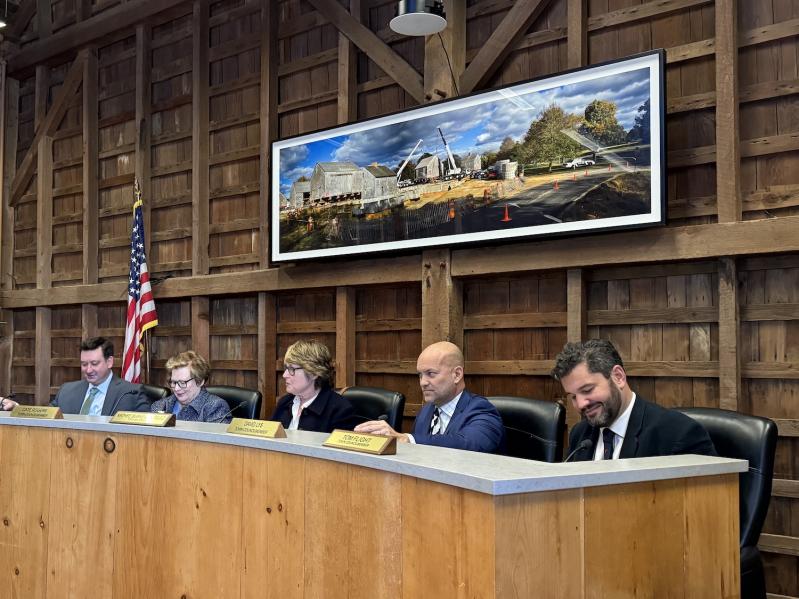The East Hampton Town Board voted last Thursday night to change a formula in the zoning code that ties the maximum gross floor area of a residence to the size of its lot.
“Gross floor area single family residence maximum square feet will now be 7 percent of lot area plus 1,500 square feet, or 10,000 square feet, whichever is less,” read Councilwoman Cate Rogers from the newly drafted legislation.
As telegraphed at its Tuesday work session, the town board was split on the matter. Supervisor Kathee Burke-Gonzalez, Councilwoman Rogers, and Councilman David Lys all voted for the change. Councilman Ian Calder-Piedmonte opposed the move, and Councilman Tom Flight abstained from the vote.
Ms. Rogers had spearheaded the changes, after having worked for nearly two years with the zoning code amendment working group to study
how the town’s zoning laws were being abused, leading to houses that were never contemplated by the town’s comprehensive plan.
“I support a G.F.A. reduction, and I think most people in town do, even those who disagree with this particular legislation,” said Mr. Calder-Piedmonte, “and I do disagree with this particular legislation.”
“I made a proposal to allow for some flexibility within the same size structure that this allows. The same clearing restrictions, the exact same pyramid laws, the exact same setbacks. Everything’s the same except for how you use that space inside the house on smaller lots,” he said. One suggestion brought up during the public hearing process was that at least a portion of the 600 square feet “allowed” for an attached garage could be used for living space, if a homeowner chose.
“I worry that we’re going to hurt working families and working people and nobody intends to do that. I think unintentionally that will be the result and so I’m going to be a ‘no’ vote on this,” Mr. Calder-Piedmonte said.
Mr. Flight acknowledged support for Mr. Calder-Piedmonte’s suggestion. “Allowing a 600-foot garage but not comparable living space is somewhat hard to justify.”
“This places an excessive burden on local families trying to survive out here as opposed to targeting the primary driver, which I see as the commercialization of our residential zones. As someone whose property would not fit into this G.F.A. formula I believe it would be hypocritical of me to support it,” Mr. Flight said.
The legislation, now passed, goes into effect on July 1.




